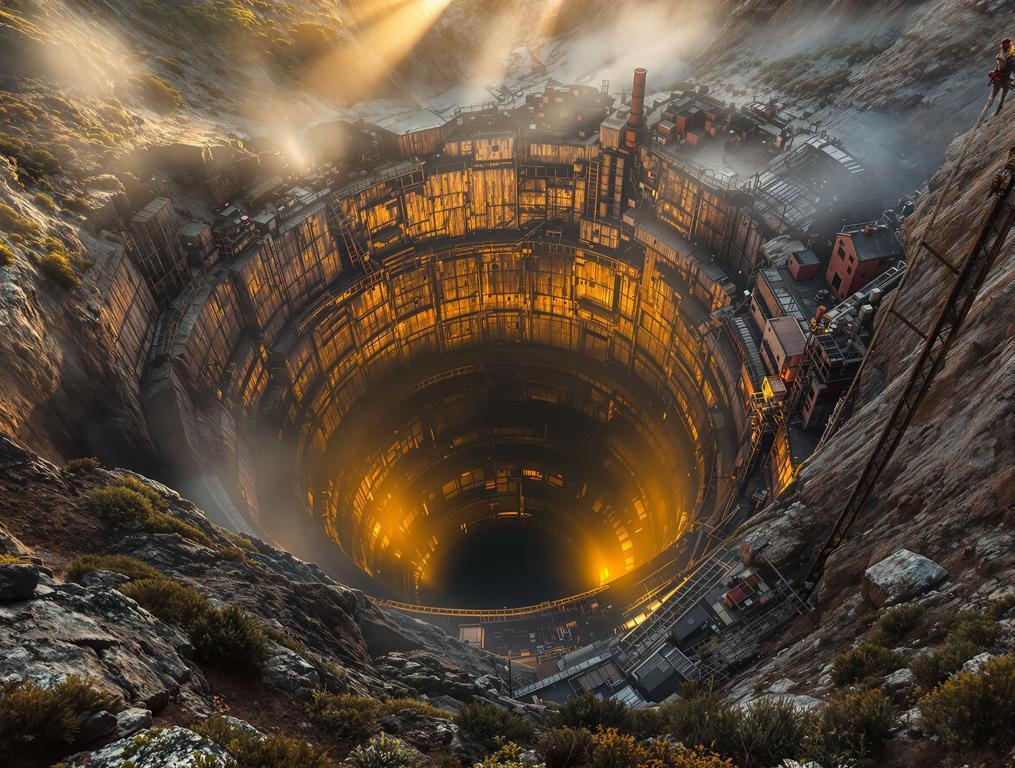The gravel crunches beneath my boots as I stand at the entrance of the Beaconsfield Mine & Heritage Centre. A chill runs through me – not from Tasmania’s crisp morning air, but from the knowledge that I’m standing above where two miners survived 14 days trapped nearly one kilometer underground. In this quiet town of just 1,093 residents, located 40 kilometers northwest of Launceston, one of Australia’s most dramatic survival stories unfolded in 2006, forever changing this former gold mining community.
The 14-Day Miracle: When Tasmania Held Its Breath
The collapse happened on April 25, 2006. A small earth tremor triggered a rock fall that trapped three miners deep within Australia’s richest gold mine. One died instantly. The other two survived in a tiny steel cage measuring just 1.5 meters by 1.2 meters – their temporary home for the next two weeks.
“It felt like the mountain was eating us alive,” the miners later recalled. Their rescue captivated a nation, with more than 100 journalists descending upon this Tasmanian town that most Australians couldn’t have previously located on a map.
As I walk through the Heritage Centre’s rescue exhibit, I’m struck by how meticulously they’ve preserved this story. The actual drill bit that first reached the miners sits prominently displayed. Nearby, a simulation chamber lets visitors experience the claustrophobic conditions the miners endured, complete with darkness and the recorded sounds of rock shifting overhead.
What makes this place unique isn’t just the dramatic rescue. Beaconsfield’s gold mining history stretches back to 1877, when the precious metal was first discovered at nearby Cabbage Tree Hill. By the 1880s, 53 different mining companies operated here, transforming a sleepy hamlet into Tasmania’s wealthiest town.
Unlike similar attractions elsewhere, everything here feels authentic rather than performative. While many Australian mining attractions feel like Hollywood sets, Beaconsfield’s exhibits exist in the actual buildings where miners once showered after grueling shifts underground.
Inside Beaconsfield’s Mining Legacy: From Gold Rush to Rescue Drama
Walking through the restored buildings, past a 20-head stamper battery once used to crush gold-bearing quartz, I’m reminded of similar mining sites in Cornwall, UK. But Beaconsfield offers something those European counterparts can’t – a raw authenticity that comes from being relatively untouched by mass tourism.
“We don’t polish our history here. The grit under your fingernails when you try the gold panning – that’s real Tasmanian dirt, just like miners would have experienced. We’re not interested in becoming another Sovereign Hill.”
Beyond the mine itself, Beaconsfield hides other surprises. Few visitors realize this was Australia’s first town to fluoridate its water supply in 1953, decades before most Australian cities. The all-timber Holy Trinity Church, built in 1907, stands as a testament to the town’s gold rush prosperity, with intricate wooden joinery throughout.
While the mine officially closed in 2012, the town has transformed itself into a wine and heritage destination. Cabbage Tree Hill Wines, just outside town, offers tastings with views across the Tamar Valley. Unlike the crowded cellar doors of South Australia’s Barossa Valley, here you might be the only visitors, giving you the winemaker’s undivided attention while tasting their cool-climate Pinot Noir.
As Sarah photographs the heritage buildings, our daughter Emma tries her hand at gold panning, supervised by a former miner who worked here until the 2006 collapse. “She’s got the technique perfect,” he nods approvingly, as Emma’s eyes widen at the tiny gold flecks catching the sunlight.
What the Guidebooks Won’t Tell You
For the best experience, arrive at the Heritage Centre before 10am when tour groups typically appear. Entry costs $18 for adults with free parking available directly outside. The complete tour takes approximately two hours, but allocate an extra hour if you want to try gold panning.
Time your visit for September through November when Tasmania’s spring offers mild weather perfect for combining heritage experiences with wine tasting. The nearby Holwell Gorge, just 10 minutes north, offers a secluded walking trail through fern glades and beneath 60-meter tall eucalyptus trees – a perfect afternoon complement to morning mine explorations.
For lunch, skip the obvious tourist spots and head to Manions Jubilee Bakery where they still use an 1887 wood-fired oven to create their signature sourdough – what locals call “gold dust in bread form.”
Standing in the afternoon sun outside the Heritage Centre, watching families explore this quiet town, I’m reminded of what makes travel truly meaningful. Not the polished tourist experiences, but these authentic encounters with history’s triumphs and tragedies. Like the miners who emerged from darkness after 14 long days, Beaconsfield offers a reminder of human resilience that stays with you long after you’ve departed its historic streets.
